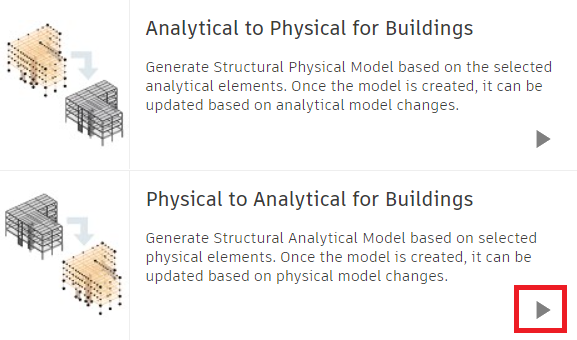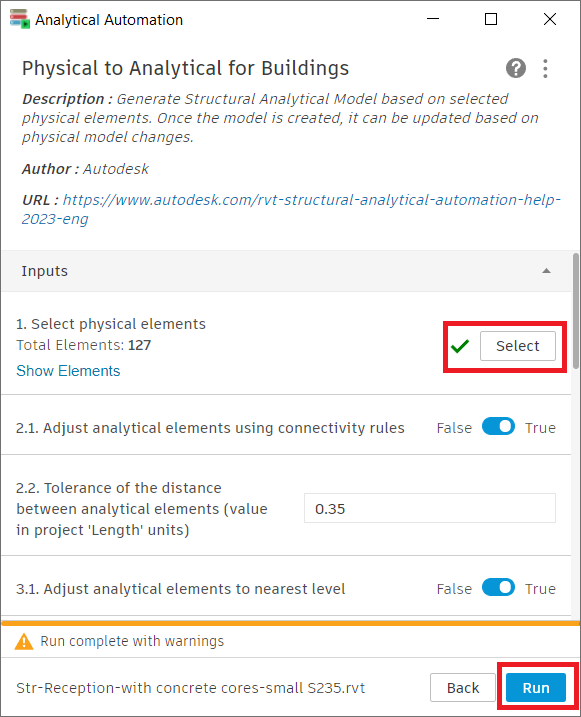This article explains how to send one or nodes of a Revit to Idea StatiCa Connection, using BIM Expert.
1. Preparation in Revit
The transfer is based on the analytical model. So in Revit, you need to create an analytical model first. You can use the Analytical Automation command in Revit or create the analytical elements manually. The quality and coherence (connection between elements) of the analytical model is not relevant, as we recommend to choose on the physical model when going to Idea StatiCa Connection.
Existiting connection components will be recognized by BIM Expert and be sent to Idea StatiCa Connection with all connection elements. Loose connection elements will not be recognized and therefore will not be tranferred to Idea StatiCa Connection.
2. Send the Revit model to Idea StatiCa Connection
2.1 From Revit to BIM Expert
There are 2 ways to send models from Revit to BIM Expert:
- Starting in Revit: in the BIM Expert tab page, select ‘Export’.

- Starting in BIM Expert: click ‘Model > Import’ and select the Revit plugin. In case you have multiple Revit models open, BIM Expert will ask to select your model to be transferred.

No matter the way you have chosen, BIM Expert will now take over.
2.1.1 Settings
You can have all (or a selection of) analytical elements exported. All elements is the most likely option.
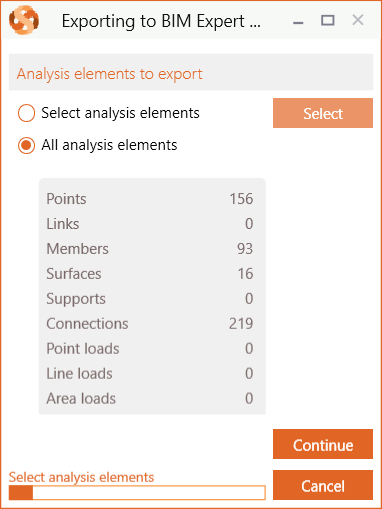
Next, the Revit sections and materials must be mapped with BIM Expert’s section and material database. BIM Expert will try to find as many automatic mapping matches as possible. In case all sections and materials find a match, you will not see any dialogs for mapping.
2.1.2 Material mapping
Database materials such as steel (e.g. S235, ASTM-Grades), concrete (e.g. C25/30, M50) and timber (e.g. C24, D50, GL28c) are mapped automatically. In some cases, the match is not automatically found, because the name differs (Concrete grade C25 instead of Concrete grade C25/30). In that case, you can select the correct material from the database.
Tip: When searching an item in the database, type the first letters of the name to find it more quickly.
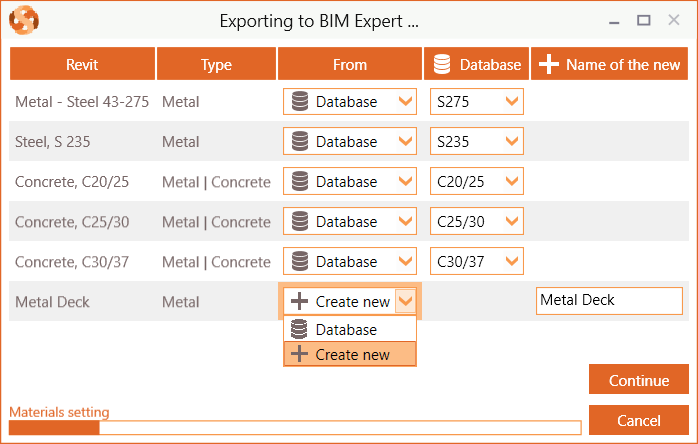
If you cannot find a suited counterpart in the BIM Expert database, the material can be added as new.
2.1.3 Section mapping
Database sections (such as I, H, UB, UC, W, C, U, O, ☐ and L sections) are mapped automatically. In some cases, the match is not automatically found, because the name differs (e.g. name is HEB300 – S235 instead of HEB300). In that case, you can select the correct cross-section from the database.
Tip: When searching an item in the database, type the first letters of the name to find it more quickly.
Parametric sections (e.g. rectangles, circle, trapezium, …) are not in the database. They should always be added as new.
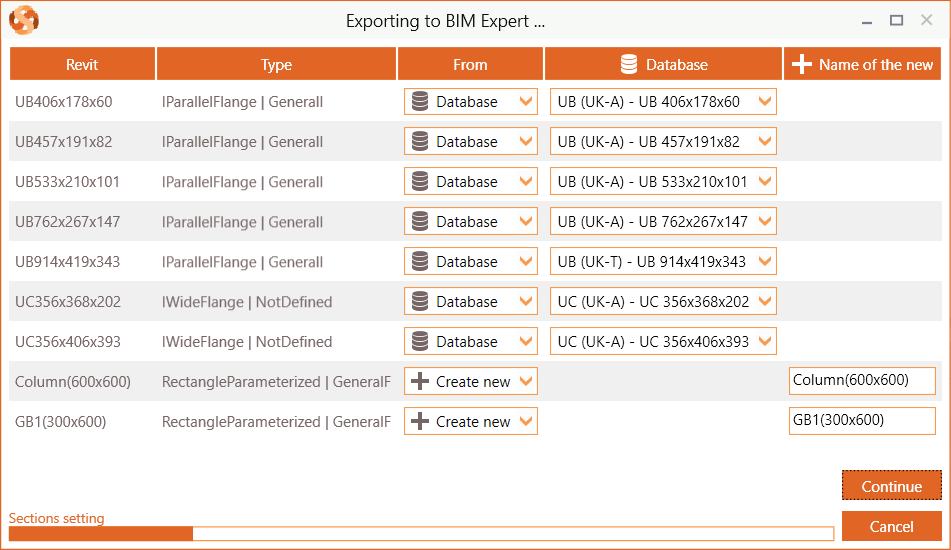
The model is now in BIM Expert.
2.2 From BIM Expert to Idea StatiCa Connection
In the Model tab, select ‘Export’. Next, choose the destination software, namely Idea StatiCa. Click ![]() to continue.
to continue.
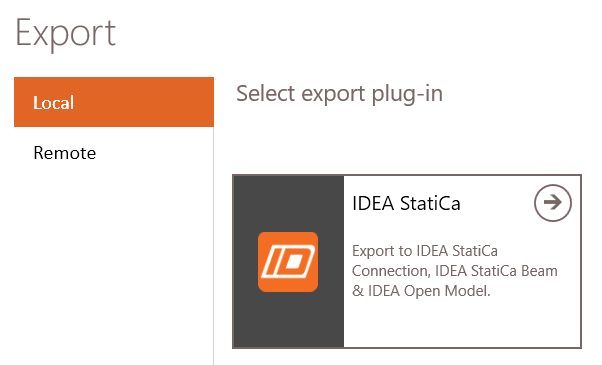
2.2.1 Settings
2.2.1.1 Version
Select the desired version of Idea StatiCa.
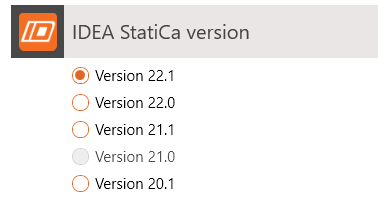
2.2.1.2 Model type
Choose between model types analysis or physical:

- The analysis model will only send independent analytical bars, as defined in the analytical model:
- When bars are continuous in reality and grouped into a physical group, this is ignored.
- Existing connections (e.g. from Tekla Structures, Revit or PowerConnect) are also ignored. Only the analysis members will remain. All physical elements (bolts, welds, connection plates, … ) will be ignored in the transfer.
- The physical model will send physical elements, that is
- Continuous bars (if properly grouped)
- Connections including all physical elements (bolts, welds, connection plates, … ). Connections are always in the physical model defined.
If you choose physical model, it is recommended to opt for ‘Use data from analysis model’, as this will use the load and result information from the analysis model.
It is good practice to check ‘Export loads’ and Export results’ unless you want to define the loads again in Idea StatiCa Connection.
2.2.1.3 Destination
Select the destination ‘Idea StatiCa Connection’.
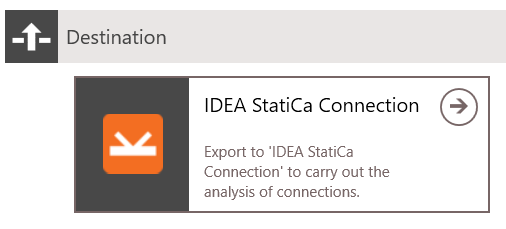
2.2.2 Select nodes and connections
In the next window you get an overview of the model, where nodes and connections can be selected to be transferred. On the left side, ‘Connections in Idea StatiCa’ holds a list with all connections to be sent to Idea. The list is empty by default.
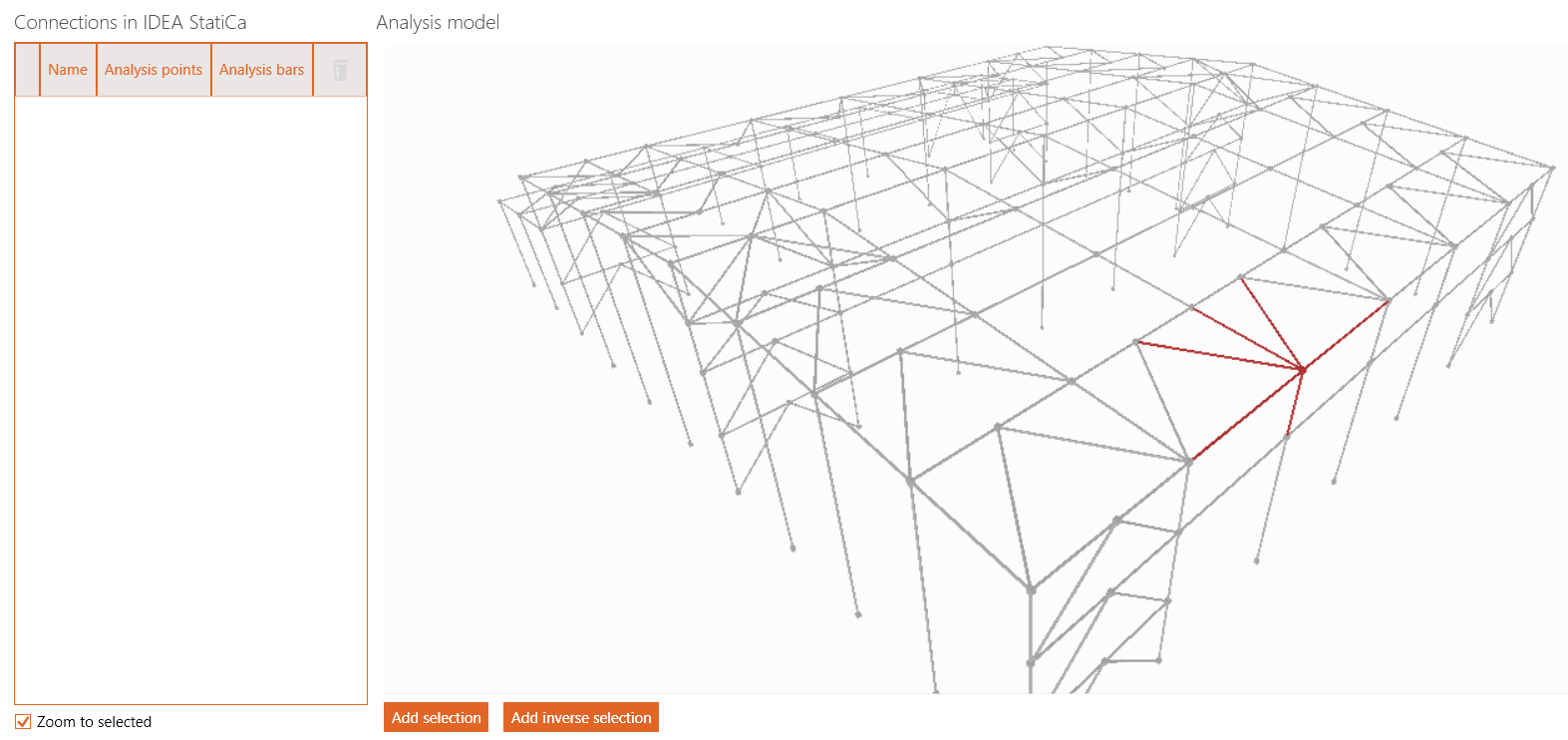
Depending on the choice of model (analysis or physical) and whether there are physical connections present in the model, this window can have different layouts.
You will see the analysis ‘bar’ model, with square nodes at the intersection points. If there are physical connections present in the model, you will also see the physical model and a list of recognized connections.
Click on a node in the Analysis model to select all connected bars (shown in red) and hit ‘Add selection’ to add them to the list. Already added nodes will be displayed in blue.
If physical connections are present, you can also select these nodes from the physical model, but only the ones that are already defined in the list. When you select a node, the physical model will zoom to the selected item.
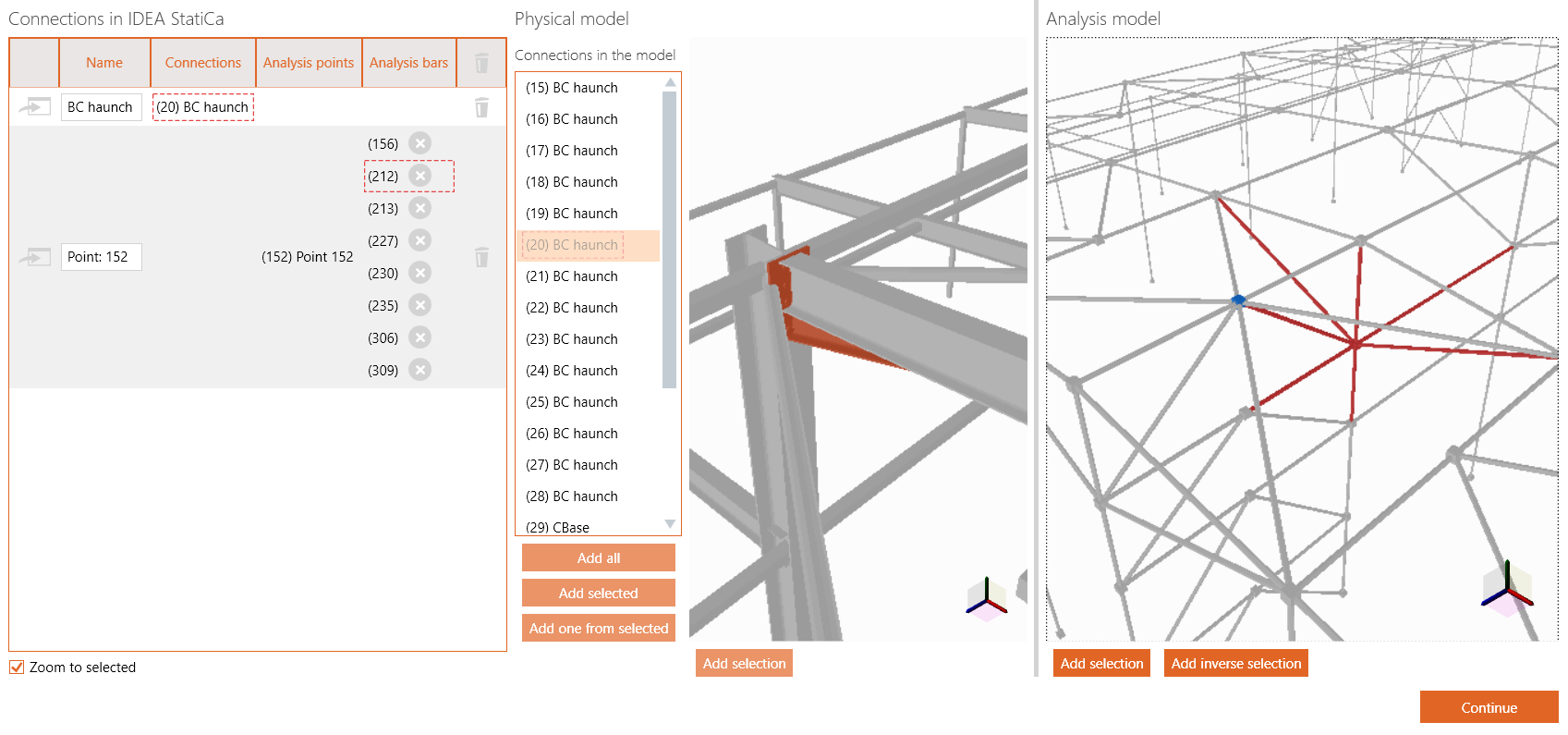
You see will the physical model, with all cross-section drawn.
Add a connection by either:
- Selecting one or more existing physical connections from the list and click ‘Add selected’
- Selecting an existing physical connection from model, by clicking one the connection part (e.g. haunch, end plate, bolts, … ) and click ‘Add selection’. The whole connection will be highlighted in red.
- Selecting multiple physical bars:
- First click on an empty white space to ensure nothing is selected
- Select physical bars (highlighted in red) and click ‘Add selection’

Hit ‘Continue’ to continue the transfer to Idea StatiCa.
2.2.3 Saving the model
Choose a folder to save the conversion files (IOM etc). We recommend to have a separate BIM Expert folder, where all your models are stored.
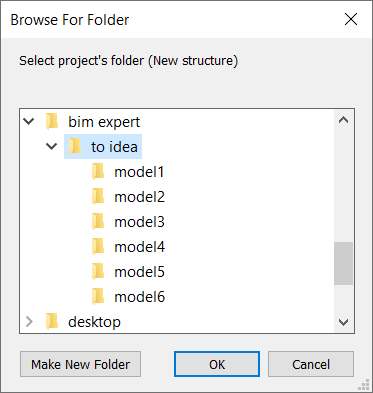
2.2.4 Open the model in Idea Checkbot
Idea Checkbot will launch automatically. A ‘New’ tab, a new project is proposed and the project name and project folder are filled out accordingly. Click ‘Create project’ to start.
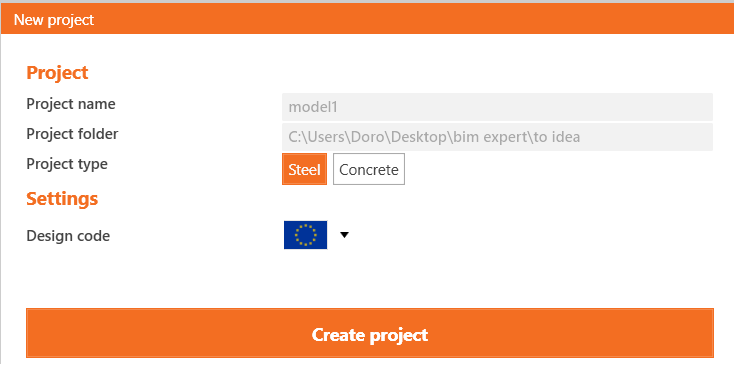
2.2.5 Load the nodes
Click ‘Import > Bulk’ to load all nodes. Depending on the number of nodes selected and the amount of results in model, this can take a while.
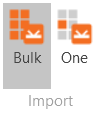
Select a connection from the list of project items and click ‘Open’ to open it in Idea StatiCa Connection.
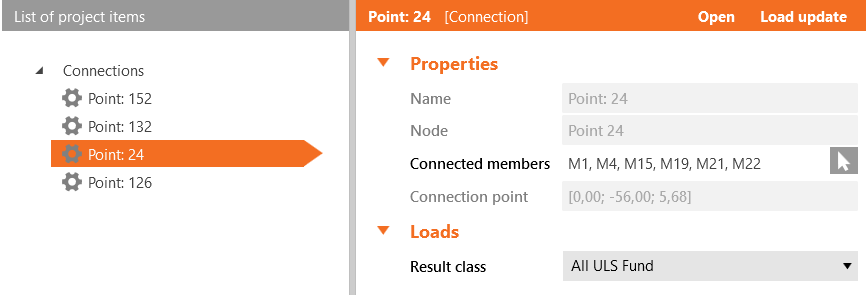
3. Final steps in Idea StatiCa Connection
In case you have sent the analytical model, you need to add bolts and connection plates to build up your model.
In case you have sent the physical existing connections, you will see the already defined connection. Other physical bars will need to be completed with bolts, welds, connection plates etc.

 Once the Analytical Automation dialog pops up, you choose ‘Physical to Analytical’, by clicking the play button.
Once the Analytical Automation dialog pops up, you choose ‘Physical to Analytical’, by clicking the play button.